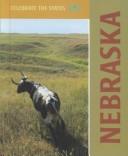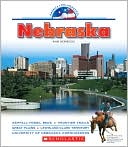It had been a while since I last read something about my native state, so I figured I’d pick up some quick reading from my local library.
As I’ve mentioned before, I use children’s books as a “Cliff’s Notes” to introduce me to a topic before reading about it more in depth. Of course, having grown up in Nebraska and lived here all my life, I probably didn’t need a Cliff’s Notes, but I chose to read some children’s books anyway.
The two books I picked up–Ann Heinrichs’ Nebraska (part of Scholastic’s “America the Beautiful” series”) and Ruth Bjorklund’s Nebraska (part of Benchmark Books’ “Celebrate the States” series)–couldn’t have been more different.
 I read Bjorkland’s book first. By halfway through the book, I had to figure out who this author was. Surely, she had to be a native Nebraskan, I thought. She described Nebraska so accurately, so fully. The back cover informed me that she was not a Nebraskan.
I read Bjorkland’s book first. By halfway through the book, I had to figure out who this author was. Surely, she had to be a native Nebraskan, I thought. She described Nebraska so accurately, so fully. The back cover informed me that she was not a Nebraskan.
Nevertheless, she did a fantastic job of laying out Nebraska’s history AND present. The first chapter gives a quick tour of Nebraska’s geography, from the Missouri River Valley to the Panhandle. From there, we take a look at Nebraska history, from ancient days to modern times. Then we learn of the government and economics, the cultural components of Nebraska cities and towns, and famous people from Nebraska. The book comes back to a full circle, ending with the “touristy” components of Nebraska geography. Appendices list the typical state report fare: state bird and motto, flag and major rivers, basic history and brief bios of famous people. Overall, the book provides a comprehensive look at Nebraska for the elementary-school audience.
But it isn’t the main topics that set this book apart. It’s the attention the author pays to details, the journalistic accuracy in portraying real Nebraskans. The book regularly quotes Nebraskans talking about themselves, their state, their history. And it doesn’t just quote “famous” Nebraskans. It quotes everyday people. Rather than just summarizing the same old Department of Tourism schlep, Bjorkland finds out what real Nebraskans think about things. She discusses the divide between the relatively prosperous, densely populated Southeastern corner of the state and the much more rural rest of the state–the tensions over taxation and how many rural Nebraskans feel that too much money is funneled to the Southeast corner, the feeling that some in the Panhandle have that they have more in common with the ranching Colorado or Wyoming than the rest of farming Nebraska. Bjorkland doesn’t dwell on these topics or hype them into a drama that isn’t there, but she honestly addresses issues like these–issues that real Nebraskans are interested in.
 Heinrichs’ Nebraska, on the other hand, reads as though it came straight from the Nebraska government website, giving the facts and the nicely sanitized details specifically designed to sell our state rather than accurately portray it. What’s more, unlike Bjorkland’s book, this book patronizes students, talking with the “twaddle” tone Charlotte Mason devotees so abhor.
Heinrichs’ Nebraska, on the other hand, reads as though it came straight from the Nebraska government website, giving the facts and the nicely sanitized details specifically designed to sell our state rather than accurately portray it. What’s more, unlike Bjorkland’s book, this book patronizes students, talking with the “twaddle” tone Charlotte Mason devotees so abhor.
Furthermore, whenever Heinrichs’ attempts to add some “real Nebraska” flavor to her writing, she gets it wrong. She writes that “when the stadium is at capacity, its population is higher than Nebraska’s second-largest city”, attempting to share one of the factoids Nebraskans love to gloat about. The problem is, there isn’t a single Nebraskan who wouldn’t catch the error here. When the stadium is at capacity (in other words, during every home game), the Husker stadium DOESN’T hold more people than Nebraska’s second largest city (Lincoln). It holds more people than Nebraska’s THIRD largest city. Nebraska’s second largest city, Lincoln, has a population of over 200,000–while the stadium contains something a little less than 100,000. HUGE error.
Then there’s the little blurb about Nebraska’s state hero, former Husker football coach (and current Husker athletic director) Tom Osborne. According to Heinrichs, Tom Osborne “ran for Nebraska governor in 2006, capturing 45 percent of the vote.” Except that he didn’t. He did run for governor, but lost in the primaries, capturing 45% of the vote IN THE REPUBLICAN PRIMARIES. BIG difference.
Heinrichs’ Nebraska is more colorful, more graph-filled, more “teacher-friendly” than Bjorkland’s Nebraska–but it also completely fails as a source of information about Nebraska. If you’re a mother traveling with her children through the 50 states, take my advice and use Bjorkland’s book to introduce your children to the REAL Nebraska–decidedly less flashy, but ultimately much more attractive.
